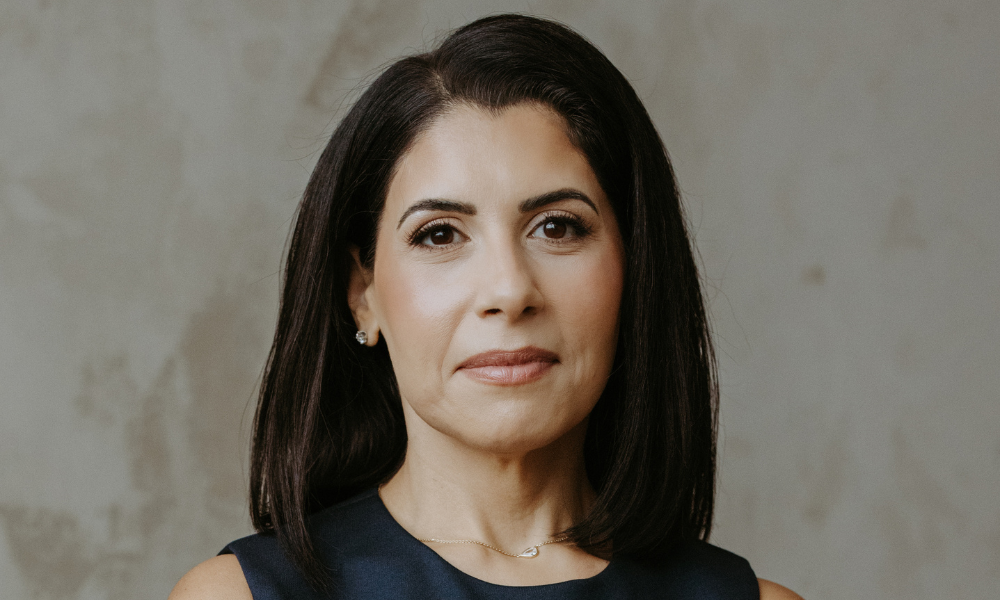What is chronic pain?
The latest version of the International Statistical Classification of Diseases and Related Health Problems (ICD-11), developed by the World Health Organization, recognizes chronic pain as a disease in its own right. According to ICD-11, chronic pain is defined as pain that persists or recurs for longer than 3 months.[1] Chronic pain can be further classified as chronic primary pain or chronic secondary pain.
Chronic primary pain is chronic pain in one or more anatomical regions that is characterised by significant emotional distress (anxiety, anger/frustration or depressed mood) or functional disability (interference in daily life activities and reduced participation in social roles). The symptoms are not better accounted for by another diagnosis. Chronic primary pain includes the following sub-diagnoses: chronic widespread pain, complex regional pain syndrome, chronic primary headache or orofacial pain, chronic primary visceral pain, and chronic primary musculoskeletal pain.
Chronic secondary pain, on the other hand, is diagnosed when pain originally emerges as a symptom of another underlying health condition but persists even after the condition has been treated. Examples of chronic secondary pain include chronic cancer pain, chronic post-surgical or post traumatic pain, chronic neuropathic pain, chronic secondary headache, chronic secondary visceral pain, and chronic secondary musculoskeletal pain.
Managing chronic pain
Chronic pain is notoriously difficult to treat. Physicians will commonly prescribe opioid medications (e.g. codeine, hydromorphone, oxycodone, tramadol, or fentanyl) to their chronic pain patients for pain relief. However, opioid medications can come with short-term and long-term side-effects, ranging from drowsiness and dry mouth to sensory hypersensitivity and respiratory depression. There are also risks associated with the chronic use of opioid medications, i.e. physical or psychological dependence.[2]
Nonetheless, reliance on the use of opioids to manage pain has increased over time. In 2017, the opioid emergency prompted the implementation of Canada’s opioid-prescribing practice guidelines for chronic non-cancer pain (CNCP).[3] In 2018, 12.7% of Canadians (roughly 3.7 million) reported having used opioid pain relief medications in the previous year. Among these people, 9.7% (roughly 351,000) had engaged in problematic use that could cause harm to their health.[4]
The co-occurrence of chronic pain, mental health issues, and substance use is predictive of problematic opioid behaviour. A five-year, community-based, prospective cohort study published in 2020 followed 1,514 participants who were prescribed opioids for CNCP. Researchers found that the most important and consistent patient risk factors associated with opioid misuse included younger age, current moderate to severe depression and/or anxiety, and a history of substance dependence.[5] The findings suggest that plaintiffs suffering from chronic pain, e.g. following a motor vehicle accident, which often sees sudden and significant alterations in the plaintiffs’ lives and the rise of anxious and/or depressive features, will be more prone to opioid misuse with chronic exposure.
The rise of cannabis
There are suggestions that some individuals may be reducing and replacing opioids in favour of cannabis. An American cross-sectional study surveyed a representative sample of adults with chronic pain across 37 states from March to April 2022. Researchers found that of the 1,724 individuals identified as having chronic pain, 31% reported having ever used cannabis to manage their pain; 25.9% reported using cannabis to manage their chronic pain in the past 12 months, and 23.2% reported using cannabis in the past 30 days. More than half of adults who used cannabis to manage their chronic pain reported that use of cannabis led them to decrease use of prescription opioid, prescription nonopioid, and over-the-counter pain medications, and less than 1% reported that use of cannabis increased their use of these medications.[6]
However, current clinical evidence to support the use of cannabis for pain is limited and variable. Some reviews of randomized controlled trials and observational studies indicate cannabis may reduce pain intensity. For instance, researchers at McMaster University in Hamilton, Ontario completed an international study using data from 32 randomized controlled trials with 5,174 patients. They found that non-inhaled medical cannabis or cannabinoids resulted in a small to very small improvement in pain relief, physical functioning, and sleep quality among patients with chronic pain, along with several transient adverse side effects (e.g. dizziness, drowsiness, impaired attention, and nausea), compared with placebo.[7] Given the close balance between benefits and harms, an associated guideline made a weak recommendation to consider a trial of medical cannabis for people living with chronic pain, in whom standard care was not sufficient.[8]
On the other hand, a meta-analysis of 20 randomized controlled studies, including 1,459 individuals, most of whom had neuropathic pain or pain from multiple sclerosis, found that participants receiving active treatment – including the two main cannabinoids in marijuana, delta-9-tetrahydrocannabinol (THC) or cannabidiol (CBD), and the prescription drugs nabilone (Cesamet), dronabinol (Marinol, Syndros), and nabiximols (Sativex) – and participants receiving placebo reported similar levels of pain relief.[9] According to Ted J. Kaptchuk, director of the Program in Placebo Studies and The Therapeutic Encounter at Harvard-affiliated Beth Israel Deaconess Medical Center, this is unsurprising as, with the exception of opioids, most pain-relieving medications are barely better than a placebo.
That said, if cannabis products are perceived to alleviate pain, even if they are no better than placebos, if they do relieve pain, and given that they are not shown to cause any significant harm, it may be better to use such products rather than use opioids that come with undesirable side-effects and consequences like dependency and addiction.
In Canada, cannabis has been legally available for select medical conditions since 2001. On October 17, 2018, the Cannabis Act (S.C. 2018, c. 16) came into effect, legalizing the sale and possession of cannabis for adults of legal age. Not long after, the Canadian Pain Task Force (CPTF) was established in 2019 to help the federal government better understand and address the needs of Canadian living with chronic pain, a diagnosis affecting nearly 8 million people living in Canada.[10] In their first task report, the authors noted that in 2018, there were approximately 340,000 authorized users of medical cannabis in Canada, with evidence suggesting that pain is one of the most commonly reported conditions for such use.[11] By September 2020, the number of Canadians using medical cannabis soared from just under 24,000 in June 2015 to over 377,000 by September 2020.[12]
Part 14 of the Cannabis Regulations (SOR/2018-144) specifically addresses access to cannabis for medical purposes. Many provincial and territorial medical licensing bodies as well as the College of Family Physicians of Canada have published their own guidance for health care practitioners related to authorizing the use of cannabis for medical purposes. At the same time, the legalization of cannabis has increased access to cannabis, making it available for self-management of chronic pain without the need for a prescription.
Danger ahead
Against this backdrop of chronic pain that is difficult to treat, growing awareness of the hazards of opioid medications, and increased accessibility to cannabis, plaintiffs still face obstacles when seeking damages for cannabis expenditures. A significant issue arises when plaintiffs are recreational users of cannabis prior to accessing cannabis for medical use to treat their chronic pain symptoms resulting from motor vehicle accidents.
In Melvin v. Li, 2023 BCSC 241 (CanLII),[13] the plaintiff was a regular user of recreational marijuana prior to the accident for his mental state, although there was no diagnosis of a mood disorder. He used marijuana on weekends and after work.[14] Post-accident, the plaintiff used cannabidiol oil (CBD oil) for pain management, which was prescribed by his treating physiatrist, and continued to smoke marijuana to control his mood. The defendants submitted that the plaintiff’s use of marijuana post-accident was at least in part if not wholly recreational. The Honourable Madam Justice Young found some medical justification for the use of cannabis products for pain management, but found that the plaintiff would have smoked marijuana for mood recreationally even if he had not been in the accident. As a result, she would not compensate him for the past or future purchase of marijuana in plant form.
In Jones v. Colonna, 2021 BCSC 1175 (CanLII), the plaintiff used prescription narcotics to cope with the pain. By the time of trial, he had weaned himself off opioids and was taking gabapentin (an anticonvulsant) and cannabis products for pain relief. At trial, the plaintiff testified that he used cannabis products before the collision for recreational purposes. This evidence led the Honourable Mr. Justice Riley to infer that he would have continued to do so even if he had not been injured in the collision, and to conclude that the future care expenditure of some $115,000 for cannabis products as a future care expenditure was not reasonable.
In Evans v. Graham, 2023 BCSC 277 (CanLII),[15] the plaintiff used marijuana recreationally both before and after her two motor vehicle accidents that were the subject of the litigation. Post-accident, she also used cannabis products to assist with her sleep and pain management. However, none of her treating or medical experts recommended cannabis products for medical use. It was not until several years post-accident that she obtained a prescription for cannabis products by way of paying an annual fee to a doctor’s clinic to maintain this prescription. The plaintiff sought the annual cost of edible cannabis and the cost of a “cannabis annual membership fee” to age 75. The Honourable Madam Justice Donegan refused these damages for cost of future care, finding that it was not medically justified nor reasonable given the evidence adduced.
In Aselstyne v. Stobbart, 2021 BCSC 26 (CanLII), there was evidence that the plaintiff used cannabis products for both recreational and pain-related purposes, even before the accident. After the accident, he obtained a prescription for CBD from a naturopath and used cannabis products for pain relief every day. He took tramadol only when absolutely necessary because he wished to avoid opioids. He sought an award of $20,000 for the future cost of cannabis products, allowing for some reduction in the cost estimates to account for the likelihood that he would have purchased cannabis products for uses unrelated to his accident-related pain management. The Honourable Madam Justice Donegan found that there was insufficient evidence to establish that the plaintiff’s cannabis product use was medically justified to treat the pain associated to his accident-related injuries, noting that the family physician had denied a prescription before the first accident for his pre-existing colitis pain and that the prescribing naturopath was not one a treating physician. Moreover, she found that the evidence did not support the award of this future care item because the plaintiff used these products both recreationally and for pain-related purposes, with no clear division of how much he used for each purpose.
In Chiasson v. Thériault, 2018 NBQB 177 (CanLII),[16] the plaintiff was a user of medical cannabis with prescriptions from her treating physicians. There was evidence that the plaintiff and her husband used cannabis prior to the accident. The plaintiff testified that she smoked cannabis at parties, while her husband testified that they smoked cannabis occasionally. The plaintiff sought over $140,000.00 to fund her future use of medical cannabis. The Honourable Mr. Justice Larry Landry found that while the use of medical cannabis was justified from a therapeutic standpoint to help the plaintiff cope with her chronic pain, she would have consumed marijuana anyway even if she had not had an accident.[17] At the same time, he agreed that her pain was chronic and that she would probably always need marijuana to help her manage and counter her pain. Taking into account the fact that she used cannabis recreationally or otherwise before the accident and that she would have continued to do so, as well as the hesitations and uncertainty of the physicians concerning the duration and frequency of consumption for medical purposes, he found that her needs could be met with an amount of $35,000.[18]
The above sample of cases demonstrates that where the plaintiff is already a recreational cannabis user before their accident, the court tends to find it reasonable to believe that the plaintiff would have continued to use cannabis even if their injury had not occurred, and therefore refuse or reduce damages for future cannabis expenditures on the basis that the plaintiff would have incurred them anyway.
Concluding Remarks
Currently, there are very few treatment options for chronic pain. Cannabis has the potential to alleviate pain and has been clinically shown to have that capacity, with the positive effect of reducing opioid consumption. However, although the use of cannabis to manage chronic pain is gaining acceptance, the courts struggle with awarding damages for cannabis products when the plaintiff is or has been a recreational user.
A balance must be struck between, on the one hand, not ordering defendants to pay for plaintiffs’ recreational cannabis usage and, on the other hand, not punishing legitimately injured plaintiffs for their legal, recreational use of cannabis, especially where medical cannabis acts as a substitute for more harmful opioids.
***
 Shortly after completing her articles at a boutique insurance defence firm in Toronto, Sylvia Guirguis discovered that her passion lay with plaintiffs and insurance claimants. She joined a dedicated personal injury firm in 2015 where she remained until joining the Singer Kwinter family in 2021. Sylvia uses her knowledge gained on the defence side as a tool in strategizing and diligently fighting for her clients’ rights in pursuing justice and fair compensation. Her academic interest in research helps her advance novel legal arguments and informs her assessments of complex cases.
Shortly after completing her articles at a boutique insurance defence firm in Toronto, Sylvia Guirguis discovered that her passion lay with plaintiffs and insurance claimants. She joined a dedicated personal injury firm in 2015 where she remained until joining the Singer Kwinter family in 2021. Sylvia uses her knowledge gained on the defence side as a tool in strategizing and diligently fighting for her clients’ rights in pursuing justice and fair compensation. Her academic interest in research helps her advance novel legal arguments and informs her assessments of complex cases.
Sylvia recognizes that the clients of Singer Kwinter are often experiencing one of the most difficult periods of their lives. She exercises the same compassion and eagerness to be of service that she has in her past experiences with Parkdale Community Legal Services and Justice for Children and Youth during her legal education, and as a personal injury lawyer since her call to the Bar.
Sylvia received her Bachelor of Arts (Honours) degree from McMaster University in 2011 and a Juris Doctor (J.D.) degree from Osgoode Hall Law School at York University in 2014. She was called to the Bar in Ontario in 2015.
[1] World Health Organization. “MG30.0Y Other specified chronic primary pain.” ICD-11 for Mortality and Morbidity Statistics, Version: 01/2023. Accessed 22 June 2023.
[2] “Use of Opioid Medications for Chronic Pain.” Gouvernement Du Québec, 23 Feb. 2023. Accessed 22 June 2023.
[3] Busse JW, Craigie S, Juurlink DN, et al. “Guideline for opioid therapy and chronic noncancer pain.” Journal of the Canadian Medical Association; 189: E659-66. Accessed 22 June 2023.
[4] Statistics Canada. “Health Fact Sheets (Catalogue 82-625-X).” Ottawa: Statistics Canada, 2019. Accessed 22 June 2023.
[5] Campbell G, Noghrehchi F, Neilsen S, et al. “Risk factors for indicators of opioid-related harms amongst people living with chronic non-cancer pain: findings from a 5-year prospective cohort study.” EClinicalMedicine 2020. Accessed 22 June 2023.
[6] Bicket MC, Stone EM, McGinty EE. “Use of Cannabis and Other Pain Treatments Among Adults with Chronic Pain in US States With Medical Cannabis Programs.” JAMA Netw Open. 2023;6(1):e2249797. (Published 06 January 2023). Accessed 22 June 2023.
[7] Wang, Li et al. “Medical cannabis or cannabinoids for chronic non-cancer and cancer related pain: a systematic review and meta-analysis of randomised clinical trials.” BMJ 2021;374 (Published 09 September 2021). Accessed 22 June 2023.
[8] Busse, JW et al. “Medical cannabis or cannabinoids for chronic pain: a clinical practice guideline.” BMJ 2021;374 (Published 09 September 2021). Accessed 22 June 2023.
[9] Gedin, F et al. “Placebo Response and Media Attention in Randomized Clinical Trials Assessing Cannabis-Based Therapies for Pain: A Systematic Review and Meta-analysis.” JAMA Netw Open. 2022 Nov 1;5(11):e2243848. (Published 01 November 2022). Accessed 22 June 2023.
[10] “Canadian Pain Task Force Report: March 2021.” Government of Canada, May 2021. Accessed 22 June 2023.
[11] Canadian Pain Task Force. “Chronic Pain in Canada: Laying a Foundation for Action.” Government of Canada, June 2019, p. 16. Accessed 22 June 2023.
[12] Ng, J et al. “Attitudes toward medical cannabis among family physicians practising in Ontario, Canada: a qualitative research study.” CMAJ Open; 9 (2) E342-E348. (Published: 13 April 2021). Accessed 22 June 2023.
[13] Melvin v. Li, 2023 BCSC 241 (CanLII).
[14] Ibid at para. 191.
[15] Evans v. Graham, 2023 BCSC 277 (CanLII).
[16] Chiasson v. Thériault, 2018 NBQB 177 (CanLII).
[17] Ibid at para. 153.
[18] Ibid at paras. 171-172.





